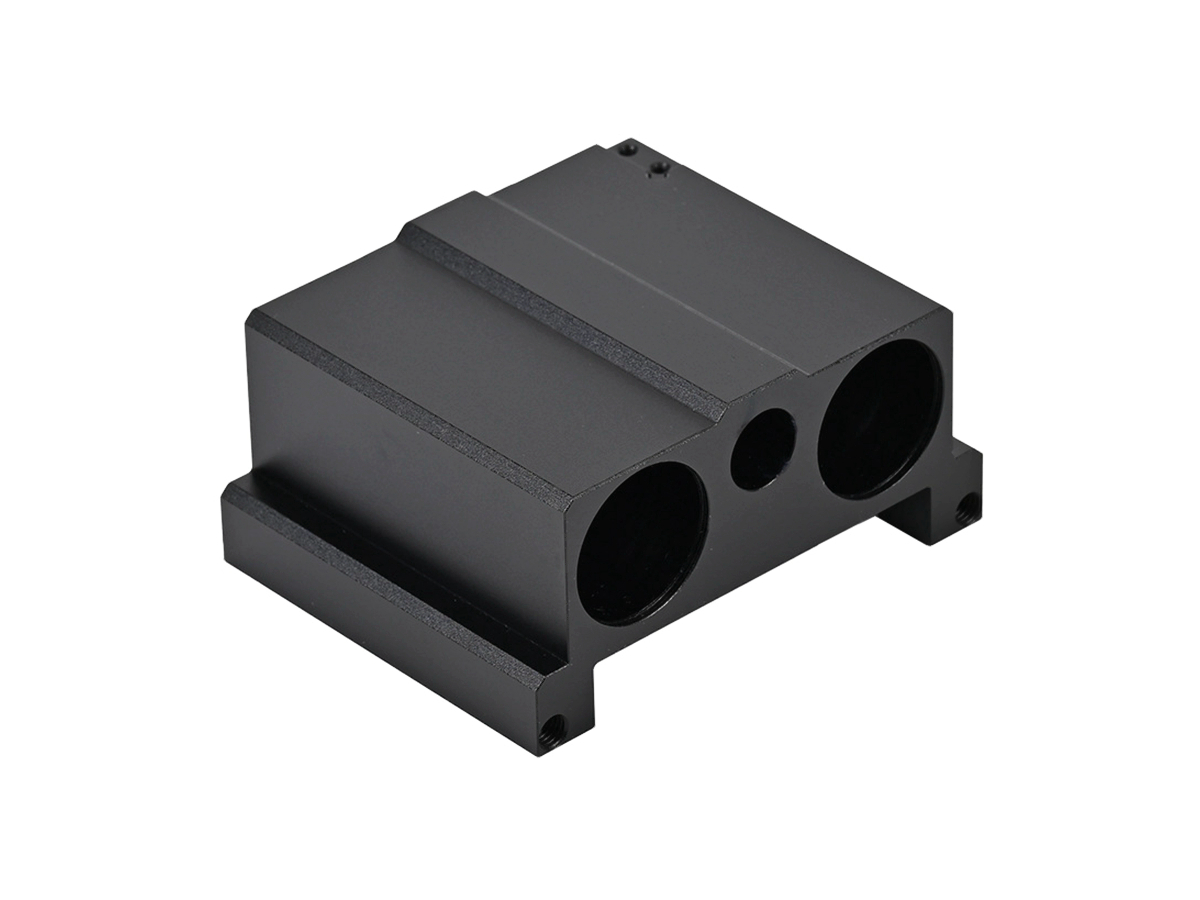Multi-Axis CNC Machining for Precision Medical Device Components: A Case Study in Stainless Steel
Introduction
The medical device industry requires components manufactured with utmost precision, stringent quality standards, and exceptional biocompatibility. Stainless steel, particularly medical-grade alloys like 316L and 17-4PH, is widely preferred for surgical instruments, implants, and precision medical components due to its excellent corrosion resistance, mechanical strength, and compatibility with sterilization processes.
Advanced multi-axis CNC machining enables the production of intricate stainless steel medical components with precise dimensional tolerances, superior surface finishes, and complex geometries. This ensures enhanced reliability, safety, and effectiveness of medical devices, directly impacting patient outcomes and industry standards.
Medical-Grade Stainless Steel Materials
Material Performance Comparison
Material | Tensile Strength (MPa) | Yield Strength (MPa) | Corrosion Resistance | Typical Applications | Advantage |
|---|---|---|---|---|---|
485-620 | 170-310 | Excellent (≥1000 hours ASTM B117) | Implants, surgical tools | Superior biocompatibility, corrosion resistance | |
1000-1310 | 862-1172 | Excellent (≥1000 hours ASTM B117) | Precision surgical instruments, orthopedic implants | Exceptional mechanical strength, wear resistance | |
515-720 | 205-310 | Very Good (~800 hours ASTM B117) | Medical equipment housings, sterile fittings | Good machinability, reliable corrosion resistance | |
655-1035 | 345-655 | Good (~500 hours ASTM B117) | Cutting instruments, surgical blades | High hardness, excellent edge retention |
Material Selection Strategy
Choosing the appropriate stainless steel grade for medical components involves careful analysis of mechanical requirements and biocompatibility standards:
Implants and surgical tools demanding excellent biocompatibility, corrosion resistance (>1000 hours ASTM B117), and moderate mechanical strength (tensile strength up to 620 MPa) benefit from SUS316L.
High-strength precision surgical instruments and orthopedic implants that require exceptional mechanical performance (tensile strength up to 1310 MPa), hardness, and corrosion resistance are best fabricated from 17-4PH (SUS630).
Medical equipment housings and sterilizable fittings need balanced corrosion resistance (~800 hours ASTM B117) and good machinability. Choose SUS304 for cost-effectiveness and versatility.
Surgical blades and cutting instruments need superior hardness (up to 1035 MPa tensile strength) and reliable edge retention and typically utilize SUS420 stainless steel.
CNC Machining Processes
Process Performance Comparison
Multi-Axis CNC Machining Technology | Dimensional Accuracy (mm) | Surface Roughness (Ra μm) | Typical Applications | Key Advantages |
|---|---|---|---|---|
±0.02 | 1.6-3.2 | Basic surgical tools, housings | Cost-effective, efficient for simpler designs | |
±0.015 | 0.8-1.6 | Curved surgical instruments, fittings | Increased accuracy, fewer machining setups | |
±0.005 | 0.4-0.8 | Complex orthopedic implants, precision devices | Superior precision, excellent surface quality | |
±0.003-0.01 | 0.2-0.6 | Intricate medical implants, micro-components | Maximum accuracy, complex geometries achievable |
Process Selection Strategy
Selecting the CNC machining process for medical stainless steel components involves strict adherence to accuracy and complexity requirements:
Simple medical equipment housings and straightforward surgical tools with general precision needs (±0.02 mm) are best suited for cost-effective 3-axis CNC Milling.
Surgical tools and fittings requiring enhanced precision (±0.015 mm) and curved geometries benefit significantly from 4 Axis CNC Milling, reducing setups and increasing efficiency.
Complex orthopedic implants, precision surgical instruments, and medical devices requiring high precision (±0.005 mm) and fine surface finishes (Ra ≤0.8 μm) utilize 5 Axis CNC Milling for superior results.
Extremely intricate and critical medical components, such as micro-implants and precision valves, requiring maximum precision (±0.003 mm), and complex geometries rely on Precision Multi-Axis CNC Machining for the highest quality outcomes.
Surface Treatment
Surface Treatment Performance
Treatment Method | Corrosion Resistance | Wear Resistance | Biocompatibility | Typical Applications | Key Features |
|---|---|---|---|---|---|
Excellent (≥1000 hours ASTM B117) | Moderate | Excellent (ISO 10993 compliant) | Implants, surgical instruments | Removes contaminants, enhances corrosion resistance | |
Excellent (≥900 hours ASTM B117) | Moderate | Excellent (ISO 10993 compliant) | Precision surgical instruments, implants | Ultra-smooth surfaces, improved corrosion resistance | |
Outstanding (>1000 hours ASTM B117) | Very High (HV1500-2500) | Excellent (biocompatible coatings available) | Surgical blades, wear-critical instruments | High hardness, reduced friction | |
Excellent (~800-1000 hours ASTM B117) | Moderate-High | Excellent (ISO 10993 compliant) | Medical device housings, fittings | Durable, sterilization-resistant surfaces |
Surface Treatment Selection
Surface treatments for medical stainless steel components depend on specific functional requirements and regulatory compliance:
Implants and surgical instruments needing excellent corrosion resistance (≥1000 hours ASTM B117) and biocompatibility (ISO 10993 compliant) benefit from Passivation to ensure patient safety.
Precision instruments requiring smooth surfaces (Ra ≤0.4 μm), reduced friction, and enhanced corrosion resistance choose Electropolishing for improved functionality.
High-wear surgical tools and cutting instruments needing exceptional hardness (HV1500-2500) and durability rely on PVD Coating, offering long-term performance and biocompatibility.
Components frequently subjected to sterilization processes benefit from specialized Sterilization-Compatible Coatings to maintain integrity and resist degradation.
Quality Control
Quality Control Procedures
Rigorous dimensional accuracy checks using Coordinate Measuring Machines (CMM) and optical comparators.
Surface roughness validation using advanced profilometers.
Comprehensive mechanical property testing (tensile, yield strength per ASTM standards).
Biocompatibility and corrosion resistance testing (ISO 10993, ASTM B117 standards).
Non-destructive testing (NDT), including ultrasonic and radiographic inspections for defect detection.
Complete documentation per ISO 13485 and FDA regulatory standards for medical devices.
Industry Applications
Medical Device Component Applications
Surgical instruments: forceps, scissors, and precision blades.
Orthopedic implants: bone screws, plates, joint replacements.
Precision micro-components for medical pumps and valves.
Sterilizable medical device housings and connectors.
Related FAQs:
Why is stainless steel ideal for medical device manufacturing?
How does multi-axis CNC machining enhance precision medical components?
Which stainless steel alloys are preferred for medical device applications?
What surface treatments ensure medical-grade quality and biocompatibility?
What quality standards must CNC-machined medical components meet?

